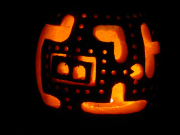- Bienvenue sur INSERT COINS - Put a coin and play.
-
 Le topic des anniversaires...
par GMD InsertCoins
Le topic des anniversaires...
par GMD InsertCoins
[Oct 28, 2021, 11:11 PM] -
 A-Pac - Jamma transfert
par veto94
A-Pac - Jamma transfert
par veto94
[Mai 23, 2021, 10:20 AM] -
 Bonjour
par papinball
Bonjour
par papinball
[Avr 18, 2021, 04:18 PM] -
 [au risque de...] nahhhhh....
par TamTam
[au risque de...] nahhhhh....
par TamTam
[Jan 31, 2021, 06:15 PM] -
 Meeting Asso le vendredi 21...
par Bubble
Meeting Asso le vendredi 21...
par Bubble
[Nov 25, 2020, 03:42 PM] -
 Petit coucou en passant
par fred33
Petit coucou en passant
par fred33
[Oct 25, 2020, 04:19 AM] -
 Recherche Ventouse pour MTC900...
par oliv77
Recherche Ventouse pour MTC900...
par oliv77
[Sep 01, 2020, 01:02 PM] -
 A PAC ultimarc
par agent orange
A PAC ultimarc
par agent orange
[Juil 23, 2020, 05:58 PM] -
 connection hdmi raspberey...
par veto94
connection hdmi raspberey...
par veto94
[Juin 21, 2020, 07:42 PM] -
 cascade- coin dozer - coin...
par guigui34200
cascade- coin dozer - coin...
par guigui34200
[Juin 16, 2020, 03:17 PM]
Membres
 Total des membres: 481
Total des membres: 481 Latest: KevinOract
Latest: KevinOract
Stats
 Total des messages: 47027
Total des messages: 47027 Total des sujets: 2787
Total des sujets: 2787 Online today: 374
Online today: 374 Online ever: 1084
Online ever: 1084- (Sep 09, 2025, 08:36 AM)
Membres en ligne
 Users: 0
Users: 0 Guests: 344
Guests: 344 Total: 344
Total: 344
344 Invités,
0 Utilisateurs
DOT it yourself !
Démarré par Persecutor, Sep 27, 2012, 01:42 PM
« précédent - suivant »0 Membres et 1 Invité sur ce sujet
Actions de l'utilisateur



